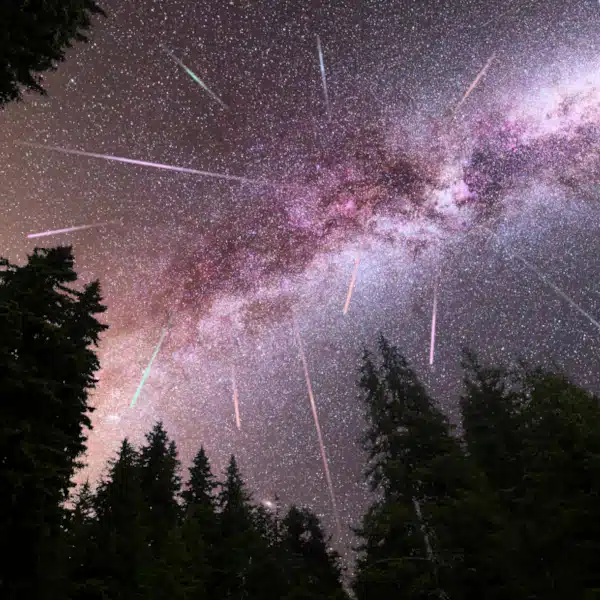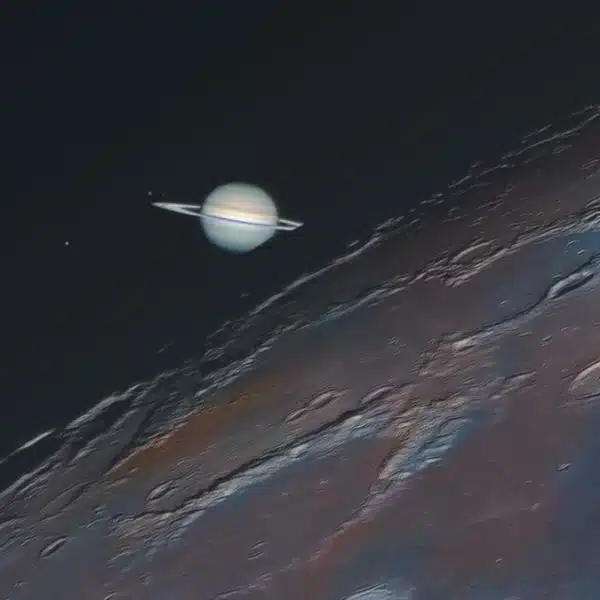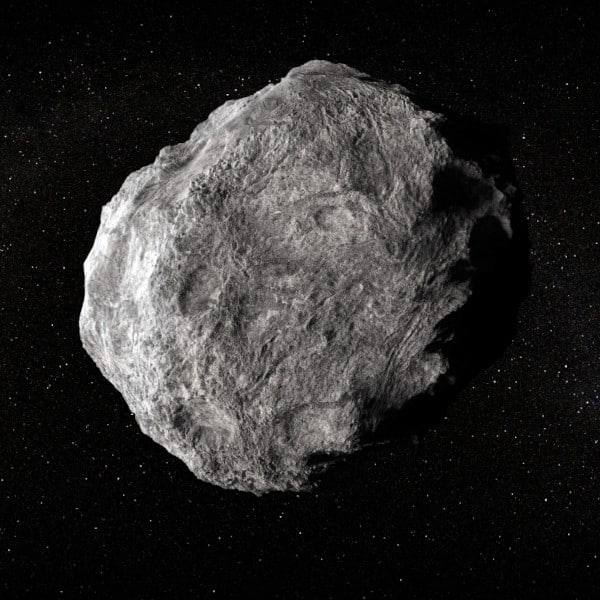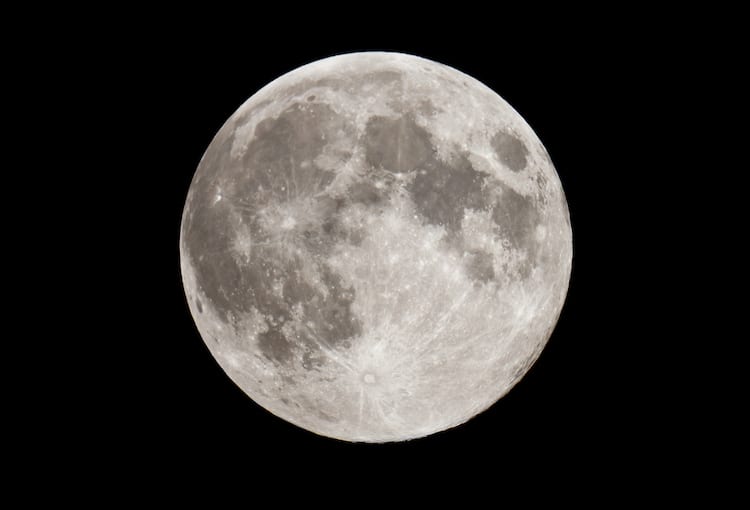
Photo: alexkalina/Depositphotos
As the celestial object closest to us, the Moon has always been a source of fascination. Filled with mystique, the Moon is often seen to hold powers that do everything from increase fertility to make us go a little crazy. As the only celestial body—other than Earth—where man has stepped foot, the Moon somehow seems accessible, yet there's still a lot we have to learn about this satellite orbiting our planet.
That's why we've stepped in to answer some of the most commonly asked questions about the Moon. By getting these facts straight, you'll have a better understanding of how the Moon interacts with Earth and just how special it truly is.
Discover the answers to these common questions about the Moon.
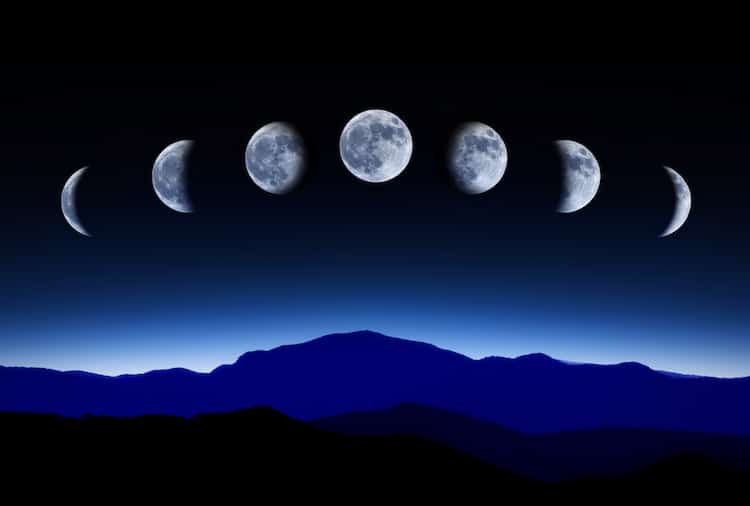
Photo: Kagenmi/Depositphotos
How far away is the Moon?
On average, the Moon is 238,855 miles (384,400 km) from Earth. The precise distance on any particular day varies, given that the Moon's orbit is elliptical and that Earth isn't even at the center of its orbit.
Astronomers call the moment when the Moon is furthest from Earth its apogee. When this occurs, the Moon is 252,088 miles (405,696 km) away from Earth. At its closest, which is called perigee, the Moon is just 225,623 miles (363,104 km) from our planet.
Is the Moon a planet?
No, the Moon is a natural satellite. There are a few important things that distinguish a natural satellite from a planet. Planets orbit stars, are spherical and substantial in size, and have a strong gravitational pull. On the other hand, natural satellites orbit planets, dwarf planets, and other small bodies in the Solar System. Natural satellites don't need to be spherical, and, sometimes, they actually help illuminate planets by reflecting the Sun when a direct light source is absent.
Interestingly, when it was first discovered, the Moon was called a planet. But, this was only because astronomers hadn't yet come up with a term to describe this type of celestial body properly.
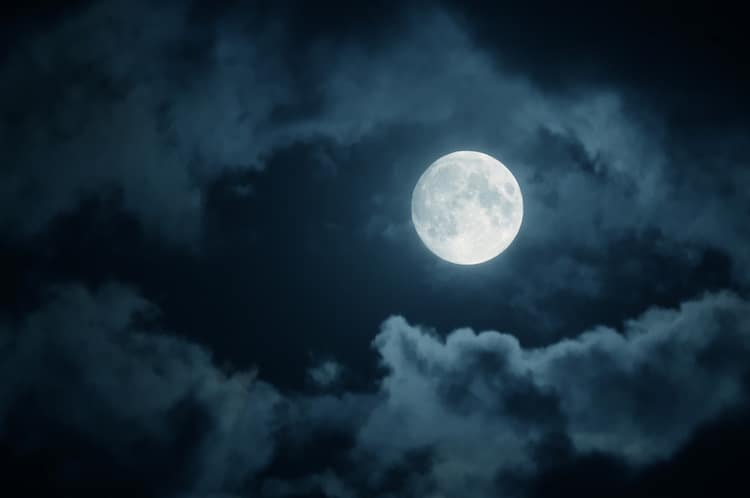
Photo: bazil/Depositphotos
How old is the Moon?
In 2017, scientists analyzed rocks collected by Apollo astronauts and concluded that the Moon was 4.51 billion years old. However, further research using computer simulations has shown that the Moon is a bit younger, forming 4.425 billion years ago.
What everyone can agree on is how the Moon was formed. About 4.51 billion years ago, a Mars-sized object named Theia slammed into Earth. This sent fragments flying into space, some of which coalesced to form the Moon. Shortly after the impact, the Moon looked like a hot ball of magma. The more recent computer simulations have estimated the time it would take for the magma to cool down and the Moon's crust to form, which is what gave them a date of 4.425 billion years.
How big is the Moon?
The Moon might look big in the sky, but in reality, it's less than a third of the width of Earth. The Moon's radius is 1,080 miles (1,740 kilometers), and its equatorial circumference is 6,783.5 miles (10,917 km). The surface area of the Moon is 14.6 million square miles (38 million square km). It's the fifth largest moon in our solar system.
10 Largest Moons in the Solar System | ||
Moon | Radius (miles) | Planet |
Ganymede | 1637 | Jupiter |
Titan | 1600 | Saturn |
Callisto | 1498 | Jupiter |
Io | 1132 | Jupiter |
Moon | 1080 | Earth |
Europa | 970 | Jupiter |
Triton | 841 | Neptune |
Titania | 490 | Uranus |
Rhea | 475 | Saturn |
Oberon | 473 | Uranus |
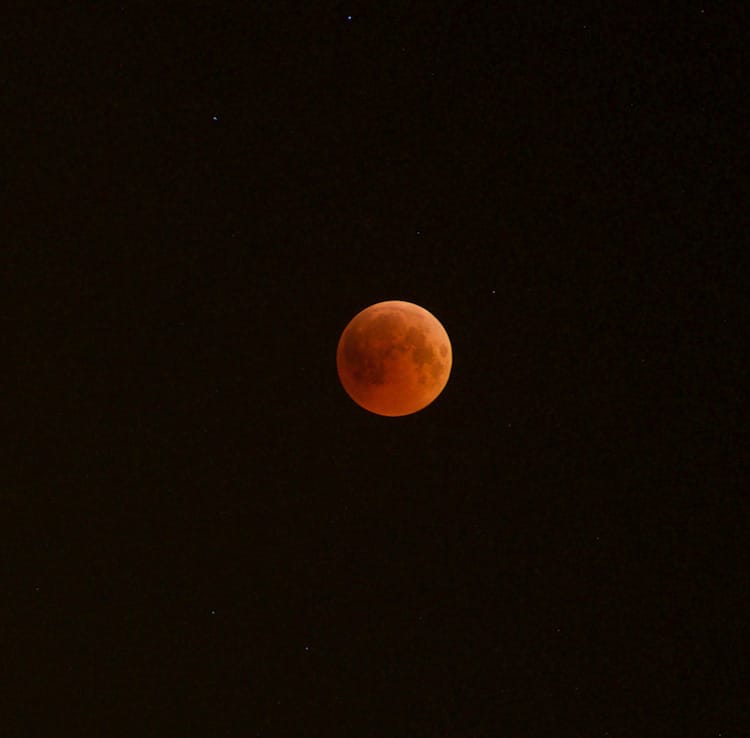
Photo: Souhayl Ben Khaled, United Arab Emirates Astronomy Group
Who discovered the Moon?
People have made records noting the Moon since pre-historic times. In the 4th century BCE, Chinese astronomer Shi Shen even created calculations on how to predict lunar and solar eclipses. By the time of the ancient Greeks, astronomers were calculating the distance between the Moon and Earth.
However, it wasn't until the invention of the telescope that astronomers were able to learn about the Moon's surface. Up until 1609, when Galileo Galilei made drawings of the Moon, it was believed that its surface was smooth. Galileo refuted that claim in his book Sidereus Nuncius.
Later in the 17th century, astronomers worked on naming the lunar features. These names are still used today.
Does the Moon rotate?
Yes, the Moon rotates on its axis. The time it takes for the Moon to rotate once (27 days) is nearly the same as it takes for the Moon to orbit Earth (27.322 days). This is why, to the naked eye, the Moon doesn't appear to spin. It also accounts for why we only see one side of the Moon.
In its early years, the Moon did rotate faster. But over time, it became synchronized with the Earth and became tidally locked. This happened when the Earth and Moon's gravitational interaction slowed the rotation of the Moon down so much that it was locked into place.
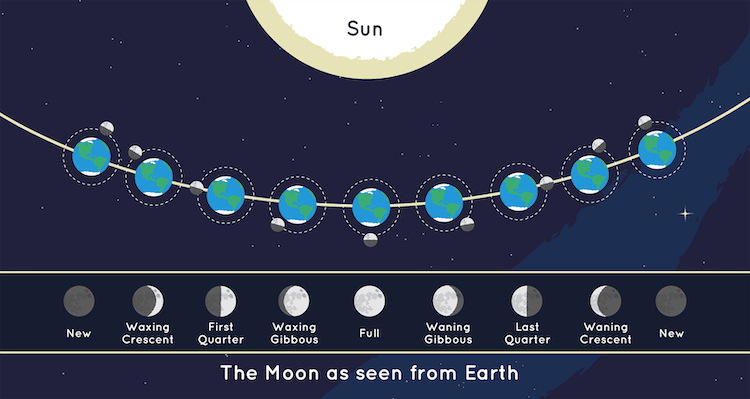
Photo: NASA/JPL-Caltech
What are the phases of the Moon?
The Moon is broken down into four primary phases and four intermediate phases that it cycles through each month. The primary phases are New Moon, First Quarter Moon (or Half Moon), Full Moon, and Third Quarter Moon (or Last Quarter Moon). The intermediate phases are Waxing Cresent Moon, Waxing Gibbous Moon, Waning Gibbous Moon, and Waning Crescent Moon.
Each of the intermediate phases lasts a little over seven days but can vary depending on where the Moon is in its orbit. Each complete cycle of phases is called a lunation.
If you are wondering what phase the Moon is in today, the Old Farmer's Almanac has a Moon phase calendar.
What is the Moon made of?
The Moon has a core, mantle, and crust. Each layer is composed of different minerals. The Moon's core is made of iron broken into three layers. The solid core is surrounded by a layer of molten iron, which is encased in a partially molten iron layer.
The mantle, which is sandwiched between the core and crust, is most likely made of minerals like olivine and pyroxene, which comprise magnesium, iron, silicon, and oxygen atoms.
Finally, the crust is a mixture of different minerals and elements, including oxygen, silicon, magnesium, iron, calcium, and aluminum.
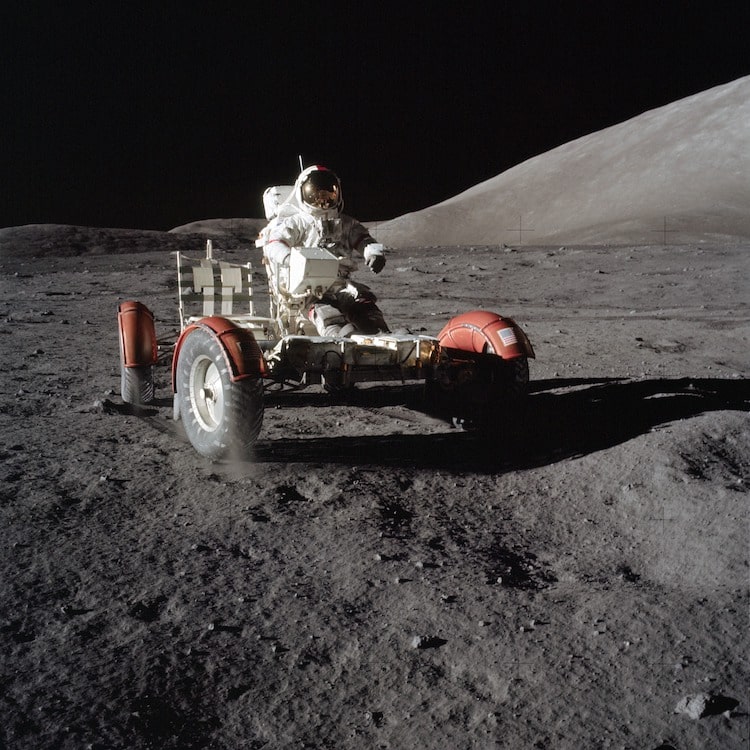
Astronaut Eugene Cernan at the Apollo 17 landing site, Taurus-Littrow Valley (Photo: NASA/GSFC/Arizona State University)
Why does the Moon look red during a lunar eclipse?
First, the Moon appears to shine not because it generates its own light, but because it reflects light from the Sun. During a lunar eclipse, Earth moves between the Sun and the Moon. This causes the Sun's light to be filtered by the Earth's atmosphere, causing certain wavelengths of light to scatter.
Light with short wavelengths, like blue and violet, scatter strongly and don't make it to the Moon. Red and orange light, which have long wavelengths, are able to pass through and hit the Moon. How red or orange the Moon looks in these cases is also dependent on the amount of dust, water, clouds, and mist in the Earth's atmosphere. This principle is called Rayleigh scattering.
How many people have walked on the Moon?
While Neil Armstrong was the first man to walk on the Moon, he was certainly not the last. Between 1969 and 1972, the United States sent 12 people to walk on the Moon as part of the US Apollo mission program.
Astronauts Who Have Landed on the Moon | ||
Astronaut | Year | Mission |
Neil Armstrong | July 1969 | Apollo 11 |
Buzz Aldrin | July 1969 | Apollo 11 |
Pete Conrad | November 1969 | Apollo 12 |
Alan Bean | November 1969 | Apollo 12 |
Alan Shepard | February 1971 | Apollo 14 |
Edgar Mitchell | February 1971 | Apollo 14 |
David Scott | July 1971 | Apollo 15 |
James Irwin | July 1971 | Apollo 15 |
John Young | April 1972 | Apollo 16 |
Charles Duke | April 1972 | Apollo 16 |
Gene Cernan | December 1972 | Apollo 17 |
Harrison Schmitt | December 1972 | Apollo 17 |
Related Articles:
NASA Confirms That There Is Actually Water on the Moon
NASA Satellite Captures Epic GIF of Moon Transiting the Earth
10 Creative Books to Celebrate the 50th Anniversary of the Moon Landing
Out-of-This-World Facts About Mars and Everything We Know About the Red Planet











































































